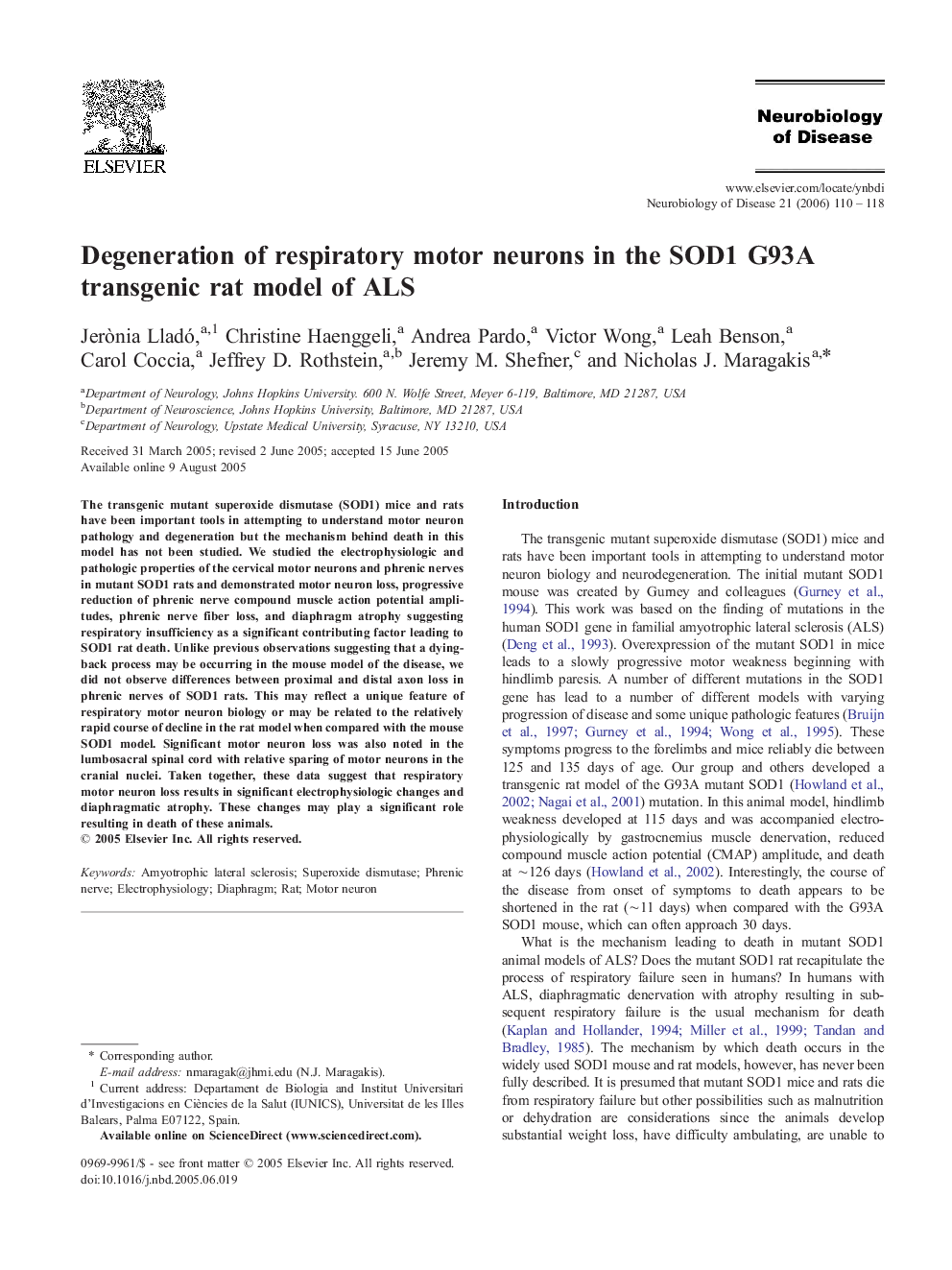| Article ID | Journal | Published Year | Pages | File Type |
|---|---|---|---|---|
| 3071121 | Neurobiology of Disease | 2006 | 9 Pages |
The transgenic mutant superoxide dismutase (SOD1) mice and rats have been important tools in attempting to understand motor neuron pathology and degeneration but the mechanism behind death in this model has not been studied. We studied the electrophysiologic and pathologic properties of the cervical motor neurons and phrenic nerves in mutant SOD1 rats and demonstrated motor neuron loss, progressive reduction of phrenic nerve compound muscle action potential amplitudes, phrenic nerve fiber loss, and diaphragm atrophy suggesting respiratory insufficiency as a significant contributing factor leading to SOD1 rat death. Unlike previous observations suggesting that a dying-back process may be occurring in the mouse model of the disease, we did not observe differences between proximal and distal axon loss in phrenic nerves of SOD1 rats. This may reflect a unique feature of respiratory motor neuron biology or may be related to the relatively rapid course of decline in the rat model when compared with the mouse SOD1 model. Significant motor neuron loss was also noted in the lumbosacral spinal cord with relative sparing of motor neurons in the cranial nuclei. Taken together, these data suggest that respiratory motor neuron loss results in significant electrophysiologic changes and diaphragmatic atrophy. These changes may play a significant role resulting in death of these animals.
